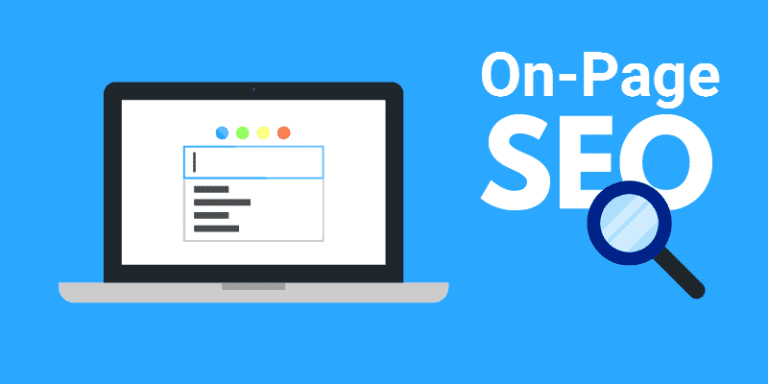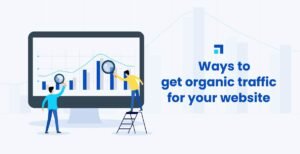How to Search Engine Optimize your Blog Content
Posted On August 1st, 2023
Array
SEO, or search engine optimization, is essential for marketers. When you maximize your web pages, including your blog posts, you increase the visibility of your website to individuals who use search engines (such as Google, and Brave) to discover your product or service. By establishing your blog as a relevant solution to your clients’ inquiries, blogging helps enhance SEO quality. Blog entries that employ a combination of on-page SEO methods can boost your chances of ranking in search results and make your website more interesting to visitors.
Although it is obvious that blog material benefits overall SEO, Google’s frequent algorithm tweaks might make writing the correct type of blog content difficult if you don’t know where to begin. Below are some of the highest criteria steps that can have an impact on blog SEO, both directly and indirectly.
1. Determine your blog’s target audience
Whatever sector your blog is aimed at, you’ll want to recognize and address the key audience that will be viewing your material. Understanding who your intended audience is and what you need them to do after clicking on your article can help you plan your blog approach. Without this understanding, you may produce technically correct and precise content that few individuals would click on because it fails to communicate to them on a human level.
Search results strive to give the most appropriate and up-to-date information. The time a search tool indexes the material is one of the factors it considers when assessing what is relevant and accurate. Indexing is the process through which a web browser finds material and contributes it to its database. When a customer browses for terms relevant to the indexed page, the page may be fetched and presented in the SERP.
2. Check out Page Load Time
Aesthetic components on your blog might affect page performance, but it isn’t the only factor. Unnecessary coding and excessive plugin use can also lead to a slow blog site.
Consider HTML-Cleaner if you aren’t sure how and where to detect and delete garbage code. It simply displays the unwanted code and allows you to eliminate it with the press of a button. Determine which ones you require to maintain your blog working daily. As well as which ones are installed as a workaround. Plugins that alter your site’s front end are a danger to page performance. And you may be able to eliminate more of such extensions than you expect to improve overall website performance.
3. Responsiveness of Mobile Devices
Mobile devices represent more than half of Google’s search volume in the United States. There’s no getting around it, optimizing your personal blog for mobile will have an impact on your SEO numbers. Most pre-made site designs are now mobile-friendly, so all you need to do is change the CTA button here and raise the text size there. Then, periodically check your Google Analytics profile and run a mobile version performance test to determine how your website is performing on mobile.
A CTA’s purpose is to direct your visitor to the subsequent step in their experience. A strong CTA is connected to the subject of your existing blog article. And flows easily with the remainder of the material. You’ll need an attractive CTA on every blog post you publish, whether you’re selling a product, promoting a newsletter subscription, or simply wanting the audience to consume more of your material.
CTAs are available in a variety of styles, so get innovative and try them out. Buttons, URLs, and plugins are among the most prevalent CTAs, and each serves a unique purpose. If you want the user to make a purchase, for example, provide a bold, conspicuous CTA, such as a button.
4. Conduct Keyword Research and Include images
After you’ve determined your target demographic and created a customer profile, it’s time to determine what material your visitors want to consume. If you don’t start with such a strategy, keyword research might be a daunting undertaking. As a result, it is recommended to commence with the issues that your blog will cover and then expand or contract your range from there.
Visuals are important to internet sites like Google for certain keywords. To land a coveted place in an image pack or video excerpt, you’ll need to create unique graphics, and employ original photographs and videos. And include meaningful alt text for every visual element in your blog post. Alt text is indeed an important aspect in determining how prominently your picture or video shows in the SERP. Alt text is especially vital for a screen reader. It ensures that visually challenged visitors have a vast experience when reading information on your blog.
5. Design a Captivating Title
The headline of your blog article is the first thing a viewer knows whenever they come across the content. And it has a big effect on whether they click or scroll down. A snappy title piques the reader’s attention by using statistics, asking a question, or starting with curiosity.
Energy, emotive, unique, and frequent words are among the elements of a catchy headline. These sorts of words in the appropriate proportions in a blog title can capture your visitors’ interest. And keep them on the website.
6. Concentrate on the subject’s perspective
Any brilliant writer or Webmaster will remind you that the most important aspect of a blog article is the user experience. Several aspects contribute to the reader experience, including readability, typography, and page speed. Organizing the text with subheadings and headings is also vital. It allows the reader to swiftly scan the content to discover the information they want. Finally, on-page features such as videos and images affect page performance. Keep picture file sizes small and keep the number of movies on a separate document to a minimum.
7. Regularly Update Content
Periodically update and refresh your blog content to keep it relevant and accurate. Google values fresh and up-to-date content, which can positively impact your search rankings.
8. Mobile Optimization
Ensure your blog content is fully optimized for mobile devices. With Google’s mobile-first indexing, mobile-friendly pages receive better rankings in search results.
9. Internal Linking
Incorporate internal links within your blog posts to connect related content on your website. Internal links improve site navigation, distribute link equity, and help search engines index more of your content.
10. External Linking
Include relevant outbound links to authoritative sources to provide additional value to your readers and demonstrate credibility. Linking to reputable websites can also improve your content’s trustworthiness in the eyes of search engines.
You’ll be on your approach to creating an article customized for search engines by reflecting on what your reader needs to know and structuring the post to meet that aim.
FAQS
Yes! When planning and producing blog articles, make sure to include evergreen information, whether it’s a long-form essay, how-to guide, FAQ, or lesson. Even the photos used in these blogs should be timeless. You should also devote a substantial amount of time and attention to your existing blog material. Primarily, reusing and upgrading existing material, as well as deleting old content.
This is because a brand-new piece of content takes much longer to settle on the results page of search engines (SERP) and earn authority, but you can refresh a piece of material and reap the advantages instantly. Not only will your appropriate amount rank higher on the SERPs, doubling the levels of visits and leads, but upgrading a current piece of content takes far less time and resources than creating a completely new post. The ultimate step is to delete any obsolete information that is no longer relevant to your target audience.
Following SEO practices while writing content can be beneficial to you in many ways. It can help you get more organic leads for your website. Implement each of these SEO-recommended strategies into your content plan. However, as your website expands, so should your search engine optimization objectives. Once you’ve identified your ideal readers’ goals and purpose, you’ll be on track to create valuable content that will ascend the SERP ranks.
Related Posts

What is KPI in SEO?
Posted on July 16th, 2024
The greatest method to prevent wasting time and resources on something that is not generating the expected return is to monitor the proper KPIs. SEO KPIs (Key Performance Indicators)...
Read More →
Ways To Get Organic Traffic To Your Website
Posted on July 16th, 2024
How to Get Organic Traffic To Your Website Do you want more visitors to your website? If so, you’ve come to the right place. A good number of websites...
Read More →
What Are the Components of SEO?
Posted on July 12th, 2024
The practice of increasing a website or online store’s visibility in the organic search results of a search engine refers to as search engine optimization (SEO). The most crucial...
Read More →
The Top 10 Meta Tags You Must Understand for SEO
Posted on July 8th, 2024
For SEO, some tags are essential. Others little or never affect rankings. The key to using meta tags correctly is to communicate with search engines: The various types of...
Read More →© All Copyright Reserved japjitravel.com
Leave a Comment :